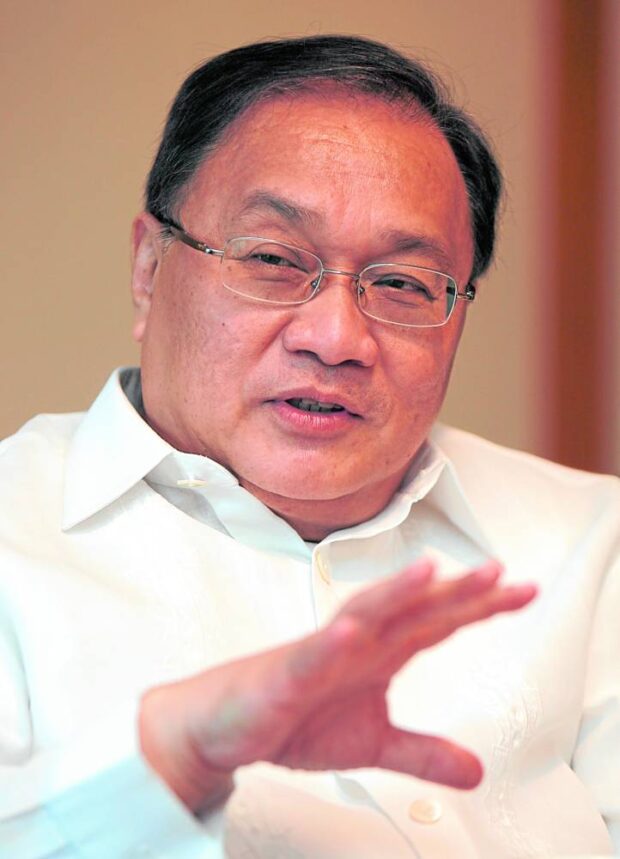
Manny Pangilinan
Nuclear energy is closer to seeing the light of day in the Philippines after power distributor Manila Electric Co. (Meralco) signed a cooperative agreement with a US-based nuclear developer to study the deployment of “one or more” small modular reactors (SMR) in the country.
Under the deal, which was signed on Thursday on the sidelines of the 30th Asia-Pacific Economic Cooperation (Apec) Leaders’ Summit in California, Ultra Safe Nuclear Corp. (USNC) would conduct a four-month pre-feasibility study to “familiarize Meralco” with its proprietary Micro Modular Reactor (MMR) energy system and assess how this could be effectively used locally.
“USNC is changing the nuclear safety and energy security conversation in the Philippines with these micro modular reactors. This agreement moves us forward with a partner who understands these important issues alongside the essential nature of the cost and reliability of the electricity supply,” Meralco chair and chief executive Manuel Pangilinan said in a statement.
Transportable
According to Meralco, USNC’s MMR energy system has a high-temperature, helium-cooled micro reactor that functions as a “nuclear battery,” which provides up to 45 megawatts (MW) of heat. The heat is then delivered into a centralized storage unit where electricity can be extracted to meet “a wide range of power requirements.”
More MMR nuclear batteries can also combine their heat in a storage unit to meet the demand for power.
USNC describes its system as composed of transportable modules, including the nuclear reactor, that link together at the site, thus allowing deployment to any place needing electricity.
Depending on the results of the initial assessment, Meralco has the option to conduct a more detailed feasibility study with a focus on the adoption and deployment of MMR energy systems, according to the utility firm.
USNC founder and CEO Francesco Venneri explained that their technology could “play a major role” in advancing energy security and sustainability in the Philippines.
“The plans that will quickly follow this study place Meralco well on the way toward creating a reliable, low-carbon, equitable and secure future for Filipinos,” he said.
123 agreement
According to USNC’s website, MMR is being licensed in Canada and the United States and demonstration units are scheduled for first nuclear power in 2026.
The USNC-Meralco partnership came after Philippine Ambassador to Washington Jose Manuel Romualdez confirmed that the Philippines and the United States were set to sign the so-called 123 agreement on nuclear energy cooperation today (Friday, Manila time) at the sidelines of the Apec leaders’ meeting.
Under Section 123 of the US Atomic Energy Act, such an agreement must be entered into by the United States with other countries to provide a legal basis for allowing American companies to export nuclear materials, including reactors.
Shift to clean energy
Pangilinan first hinted at their partnership with USNC during a press conference in August, when he announced that Meralco was already in talks with the company for the development of technology harnessing nuclear energy to arrest surging electricity prices and meet growing power demand in the Philippines.
Meralco, through its power generation unit Meralco PowerGen Corp., later sent a team to the United States to study the MMRs of the University of Illinois.
According to Meralco, the nuclear initiative was part of its long-term sustainability strategy of shifting to clean energy.
In September, Meralco formally launched its Filipino Scholars and Interns on Nuclear Engineering program, offering local engineers a chance to study nuclear development without charge in the United States, Canada, South Korea, Japan and France.
Still mostly coal
Pangilinan went as far as encouraging Filipino nuclear engineers based abroad to return to the country and assist in nuclear energy development.
Nuclear power currently has no contribution to the country’s energy mix, which is still largely made up of coal, as the controversial $2.3-billion Bataan Nuclear Power Plant has never been commissioned since its completion in the 1980s.
President Marcos began his term last year by reviving plans of exploring nuclear power generation due to the impending surge in electricity demand.
Under the Philippine Energy Plan, the government is looking to include 1,200 megawatts (MW) of nuclear energy in the power mix by 2032, rising to 2,400 MW by 2040, and to 4,800 MW by 2050.